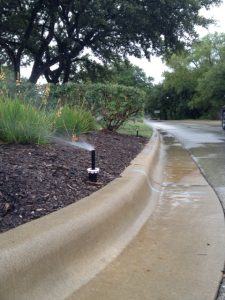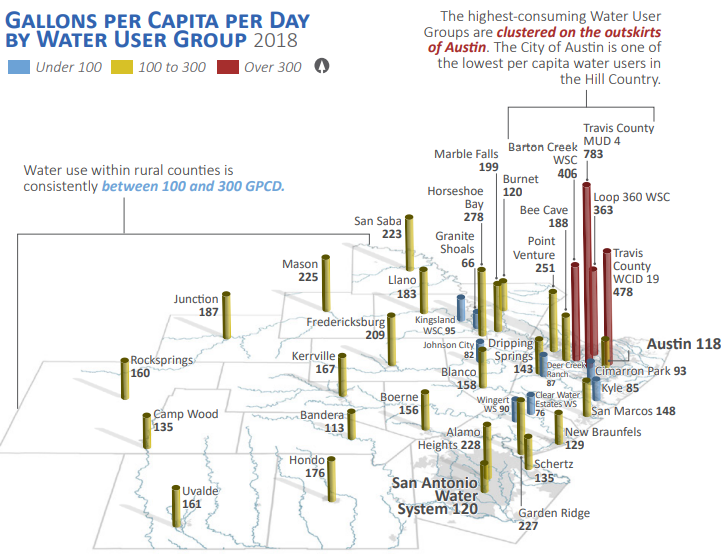 For immediate release: Opinion Editorial April 11, 2022
For immediate release: Opinion Editorial April 11, 2022
By: Jennifer Walker, National Wildlife Federation
Water is an integral part of the Hill Country fabric, and it is embodied in the rivers and springs that make this region special. It is also the single most limiting factor in the Hill Country. The region’s population is growing rapidly and, according to a comprehensive new study from the Texas Hill Country Conservation Network, there simply isn’t enough water available from traditional sources to match current consumption patterns. We need to urgently rethink how we capture water—and how we consume it.
 To better understand the scope of water supply pressures in the region, we looked at per capita water consumption (or GPCD) as part of the newly released State of the Hill Country Report. This metric is simply the water use in a community divided by its population. Our analysis shows a wide variation in water usage across the region. While there are several factors that may lead to a high GPCD in one community over another, it is clear we have a big opportunity and a responsibility to focus on reducing per capita water use where possible for the good of the region.
To better understand the scope of water supply pressures in the region, we looked at per capita water consumption (or GPCD) as part of the newly released State of the Hill Country Report. This metric is simply the water use in a community divided by its population. Our analysis shows a wide variation in water usage across the region. While there are several factors that may lead to a high GPCD in one community over another, it is clear we have a big opportunity and a responsibility to focus on reducing per capita water use where possible for the good of the region.
The big takeaway from this study is that while per capita consumption varies considerably across the region, it increasingly exceeds what is available from traditional surface and groundwater sources. Current use patterns severely threaten the region’s rivers, springs, aquifers and ecosystems. This is not an impossible problem to solve. There are tried and true solutions available to reduce water use through conservation and efficiency. These tools are well-known and are being used with great success in cities like San Antonio and Austin. We can learn from our peer communities and put programs in place to make a real dent in our water use.

We can also develop additional water supplies to meet growing water needs by making use of sources of water in our communities that we do not traditionally count as water supply. These include rainwater, AC condensate, stormwater, and treating and reusing wastewater—all commonsense solutions to meeting our future water supply needs. These tools are part of a growing practice known as One Water, an integrated water management approach that could greatly benefit the Hill Country.
When considering future water supply for the Hill Country, we also need to think beyond water for people. Using water in excess of what is available from our rivers and aquifers can negatively impact fish and wildlife habitat and the natural resources and landscapes that make the Hill Country special and unique. This is not a future that any of us want to contemplate, but we must act today to avoid that outcome tomorrow.
In addition to water consumption, the State of the Hill Country presents data concerning pristine stream and spring flow metrics. Protecting water supplies, water quality, and spring flow are linked—each influences the other and should not be considered in a vacuum. Sustainable policies for land and water management require forethought and collaboration. These efforts will benefit all of us.
The State of the Hill Country tells us we have a number of natural systems under a growing amount of pressure from growth and development. We will soon reach the point where the impact of human harms will make it impossible to recover. The solutions to a more sustainable Hill Country future are at hand, and we need to embrace them before it’s too late. Everyone who lives, works or visits the Hill Country has a role to play in protecting
these vital water resources as the region inevitably grows.
Jennifer Walker is the Deputy Director of the Texas Coast and Water Program at National Wildlife Federation. In 2021, she was appointed by the Texas Water Development Board to represent Environmental Interests on the Texas Water Conservation Advisory Council, and she also serves on the Executive Committee for the Texas Hill Country Conservation Network.
Find The State of the Hill Country Report at: OurTxHillCountry.org
The Watershed Association is a Texas Hill Country Conservation Network Member organization and contributed to the State of the Hill Country Report.